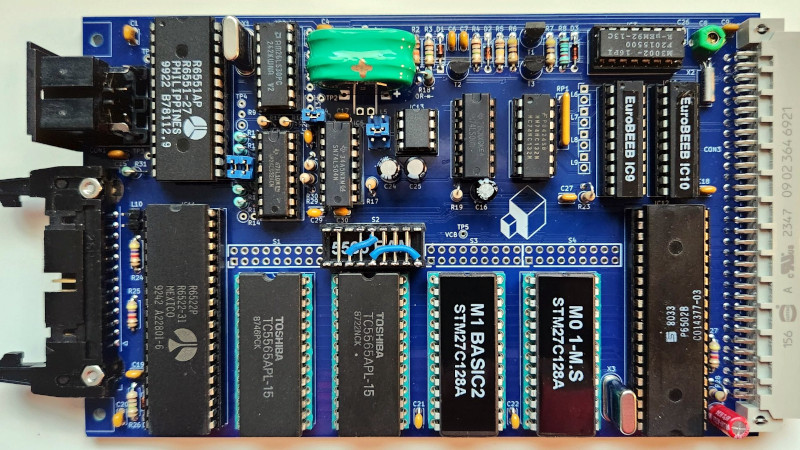When we think of 8-bit computers, it’s natural to start with home computers. That’s where they live on in the collective memory. But a Z80, a 6502, or similar was more likely to be found unseen in a piece of industrial machinery, doing the job for which we’d today reach for a microcontroller. Sometimes these two worlds intersected, and thus we come to the EuroBEEB, a derivative of Acorn’s BBC Micro on a Eurocard. [Steve Crozier] has performed extensive research into this system and even produced a recreated PCB, providing a fascinating window into embedded computing in the early 1980s.
The EuroBEEB was the work of Control Universal, a Cambridge-based company specialising in embedded computers. They produced systems based upon 6502 and 6809 processors, and joining their product line to the then-burgeoning BBC Micro ecosystem would have been an obvious step. The machine itself is a Eurocard with a simple 6502 system shipped with ACORN BBC Basic on ROM, and could be seen as a cut-down BBC Micro with plenty of digital I/O, accesible through a serial port. It didn’t stop there though, as not only could it export its graphics to a “real” BBC Micro, it had a range of expansion Eurocards that could carry the missing hardware such as analogue input, Teletext, or high-res graphics.
The reverse-engineered PCB comes from analysis of surviving schematics, and included a couple of gate array logic chips to replace address decoding ROMs in the original. If it seems overkill for anyone used to a modern microcontroller, it’s worth remembering that by the standards of the time this was a pretty simple system. Meanwhile if you only fancy trying BBC BASIC, there’s no need to find original hardware.
















Fitting a Beeb on a Eurocard was a fitting thing to do, given that Acorn’s original machines (the System 1 through 5) were all Eurocard machines.
The Acorn Atom (immediate predecessor of the Acorn BBC Micro) was essentially a System 3 with the disk drive removed, and put in an all-in-one case along with the keyboard.
It looks like it fitted to a real BBC Micro via a Tube™ interface. The concept of adding a second CPU with a defined I/O protocol was a superbly prescient idea by Acorn, as they anticipated being able to integrate straight into the 16 and 32 bit generation from the start.
In practice they didn’t provide great options. Acorn bet on the NatSemi 16032 CPU, which failed monumentally in the market, though in time, other options, like I believe, an Intel 80286 became available. Oddly enough I don’t remember them being enthusiastic about the 68000.
To me, it looks like the user port on the back, not a Tube connector. The NS processor was a 32016. I don’t recall a 286 2nd proc. The Master512 did have a 186 though.
“Out of the box” this connects to the Beeb using the serial interface, but there was another card to use in conjunction with this (BeebEX), to turn it into a second processor, accessed via the 1MHz bus interface.
Yes, the poorly-named Master 512 had a 80186 coprocessor and the parasite ran a DR-DOS variant called DOS Plus (or CP/M). You could run the GEM GUI on it, which rendered onto the 640×256 BBC Micro monochrome MODE 0, which felt very odd. There was even CGA emulation, which worked by having an interrupt handler push changes to the CGA screen buffer across the Tube interface into the BBC Micro’s four-colour MODE 1. https://www.youtube.com/watch?v=hWwRLRQ8NIw